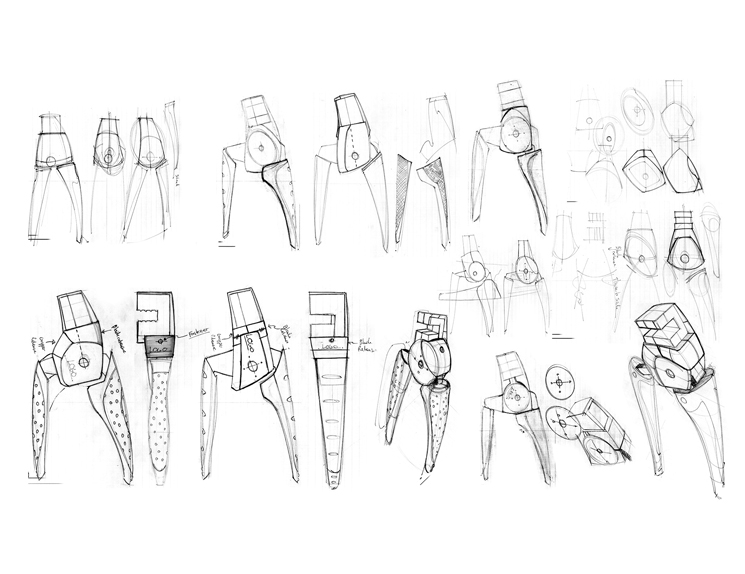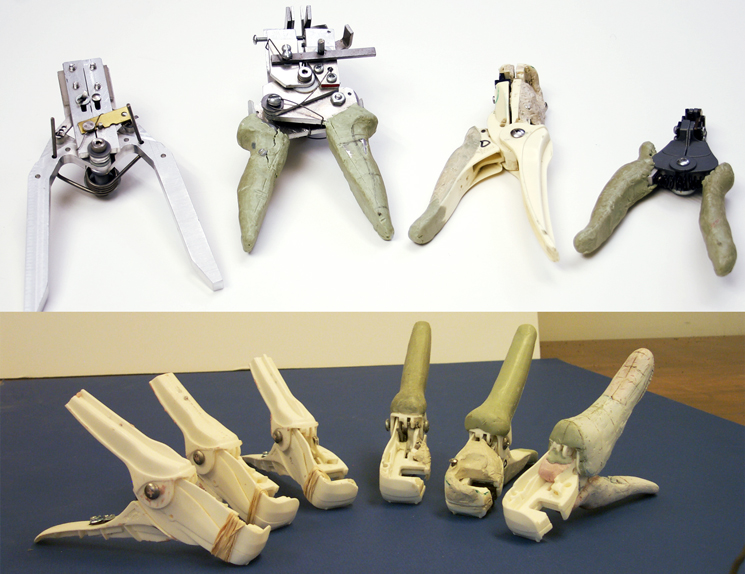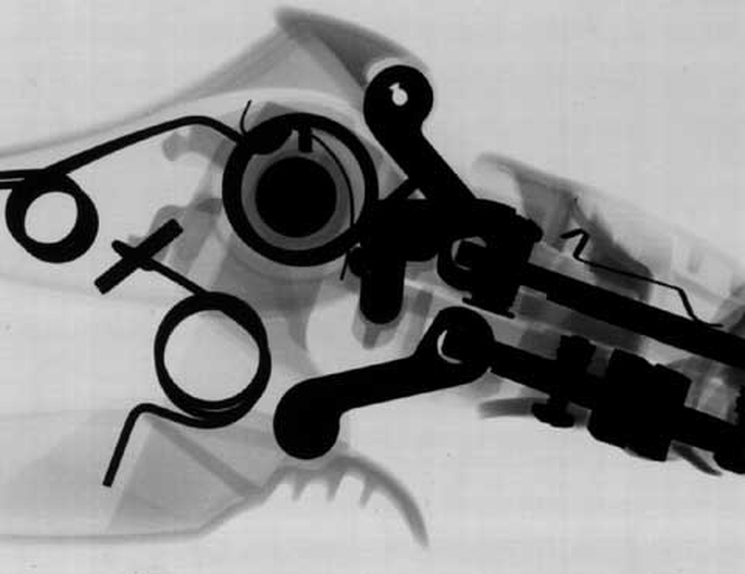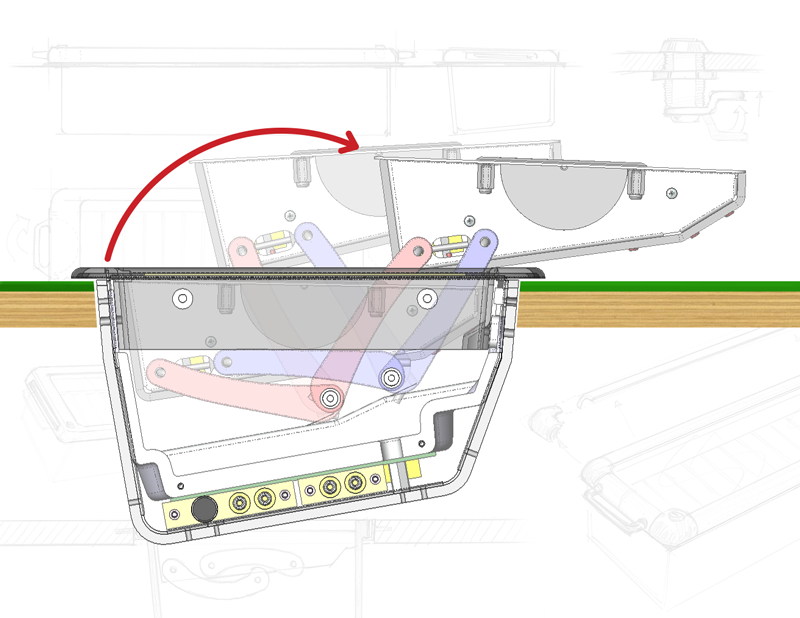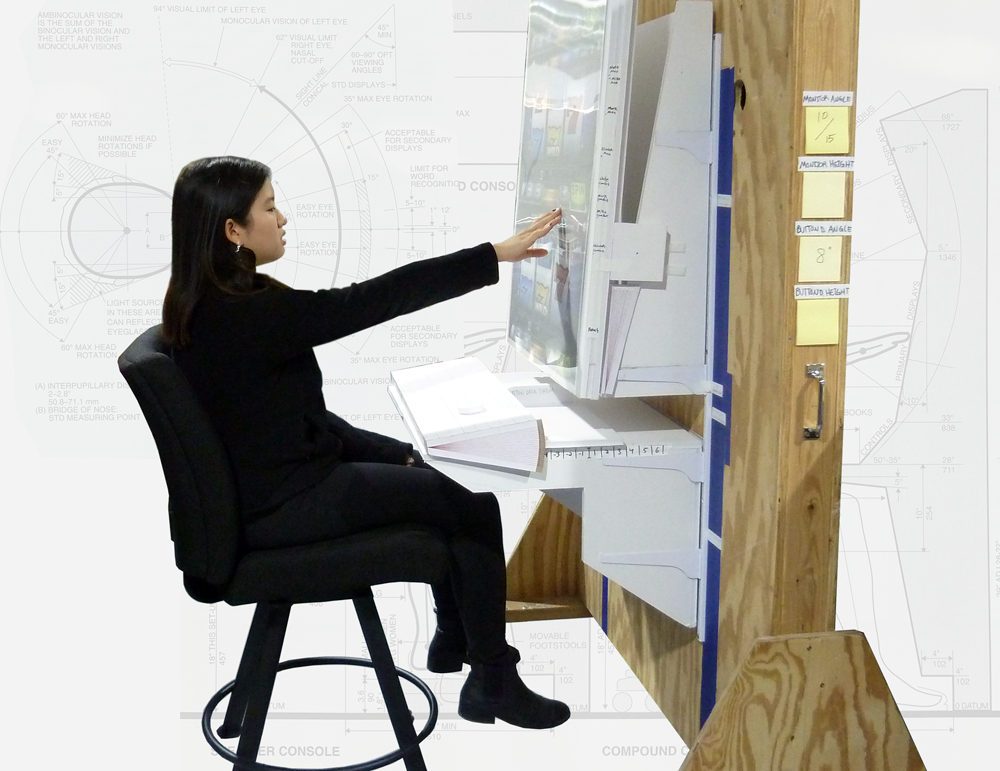Ideal Industries asked DGI to take a fresh look at their venerable die cast Stripmaster. They wished to introduce a new tool with improved ergonomics and reduced weight to coincide with the introduction of new, patented, high precision, laminated blades for their demanding aerospace market.
Problem Analysis
- Identified redundant forces in the old mechanism’s use of springs.
- Reduced the stroke of the handles (to suit ergonomic standards for the width of hand tools) by optimizing the leverage and individual actions of the mechanisms.
- Used FEA on simplified models of the mechanisms’ major components to prove upfront that a plastic design could withstand the forces required of the tool.
- Calculated that a straighter strip essential to maintaining the integrity of the conductor could be achieved by moving the pivot point between the jaws.
User Observation
DGI went to Boeing production facilities in Washington and Arizona to observe how the Stripmaster was used in the field. We identified that the geometry of the tool forced the user to put their wrist into an ergonomically risky posture, along with other observations on differences between male and female users, left and right handed users, and significant service issues related to blade alignment.
Industrial Design
- Developed multiple styling options to fit the geometries established during the “problem analysis” phase.
- Extensive handle exploration to improve ergonomics and provide both men and women (who tend to hold the tool differently due to differences in hand strength) multiple positions to handle the tool.
- While modeling the final tool, the industrial designer worked interactively with an FEA engineer to creatively push the design as far as it could go while ensuring that the tool would have the strength to withstand the forces put on it.
- Prototypes were used extensively to validate the ergonomics of the tool and identify opportunities to improve the total design.
Value Added Engineering
- Developed a new blade retention system that automatically adjusted the blade after every cycle of the tool to eliminate tool downtime.
- Reduced the forces required from the operator to cycle the tool by eliminating redundant forces through new spring designs and optimizing the spring rate to smooth out the operation.
- Worked with Ideal through cycle testing to optimize the tool design and ensure long life.
